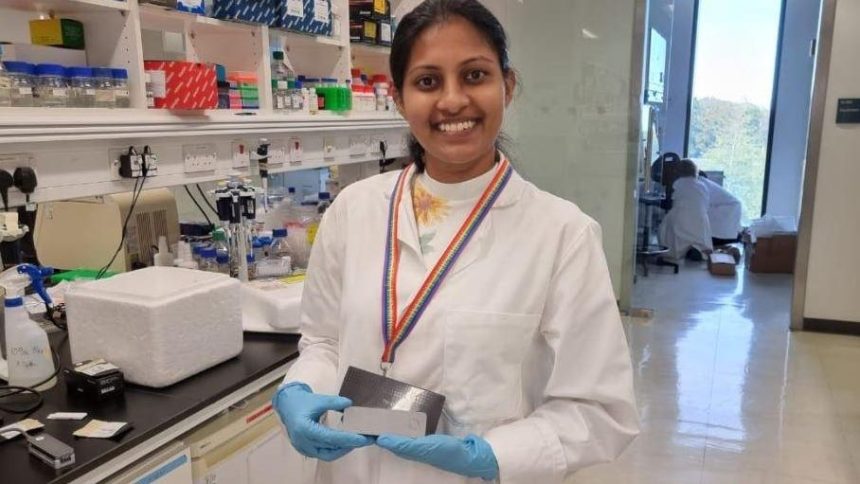A lab in Sri Lanka is harnessing modern genetic techniques to improve the identification of the meat and oil of sharks and rays in the country’s fish markets.
Sri Lanka’s sovereign waters in the India Ocean cover an area about the size of France (510,000 square kilometers or about 200,00 square miles) and within this vast area are over 50 shark species, of which around a dozen species are of commercial significance.
Lankika Anjani, a researcher at the Blue Resources Trust in Sri Lanka, explains that Sri Lanka’s first shark and ray conservation genetics laboratory is focused on helping conserve shark, ray, and chimeras species using conservation genetics, a field dedicated to using genetic information to help conserve species.
“As a first project there, I am working on the build-up of a genetic workflow for the identification of shark and ray species using next-generation sequencing,” Lankika says, “The second stage of the project would be to identify products in trade and export from Sri Lanka that cannot otherwise be visually identified (meat, oil etc.).”
Over 65% of shark and ray species in Sri Lanka are threatened with extinction on the IUCN Red List and 12% of the species are either Data Deficient or not assessed by the Red List, which is particularly pertinent on Shark Awareness Day, celebrated on July 14.
Lankika says one of the main aims of the lab is to look at the extent of mislabeling of products, for example, dried shark or ray meat being sold as generic dried fish.
“Most people think we need to go to the sea or we need to dive into the ocean to conserve aquatic species, but I know we can do the same work within a small laboratory,” she says, adding that the team hopes to expand their ability to understand Sri Lankan marine biodiversity by studying aspects such as stock status and population genetics without having to rely on overseas labs.
“The plan is to also provide in-country sequencing capacity to government agencies such as the Department of Wildlife Conservation and Sri Lanka Customs to facilitate a relatively quick turnaround,” Lankika says.
Lankika was born in Colombo, Sri Lanka and says she had always been very interested in aquatic species as a child.
Her undergraduate degree was in Aquatic Resources Technology at Uva Wellassa University in Sri Lanka and in 2019 she started working on genetics.
“When we visited fisheries markets for field visits these shark and ray species got my attention,” she says, “After that, I started to search about these species and got to know they are amazing animals and as a nation, we are over-exploiting them.”
Lankika would go on to receive an Early Career Ocean Professionals (ECOP) grant from The New England Aquarium’s Marine Conservation Action Fund (MCAF) to help her work.
Lankika says countries in the Global South are rich in biodiversity, so they need to build their own home-grown capabilities.
“We need to have our own laboratories and mechanisms in place to enable assessments, in order to address wildlife conservation,” she says, but adding that’s no easy task given that these countries face difficulties in technology transfer and training, especially in the field of genetics and biotechnology.
“My team and I were able to bring this next generation of sequencing facilities with Oxford Nanopore technology to help conserve marine wildlife in Sri Lanka,” Lankika says.
Another conservationist focusing on sharks in the Global South is Rafid Shidqi, Co-Founder and Director of Thresher Shark Indonesia.
The pelagic thresher shark’s long tail can reach several meters in length, stunning or killing prey in a whipping motion, but their population has significantly declined over the past decades due to hunting, and there have been no regulations for protecting them in Indonesia, leaving them on the brink of extinction.
Read the full article here










